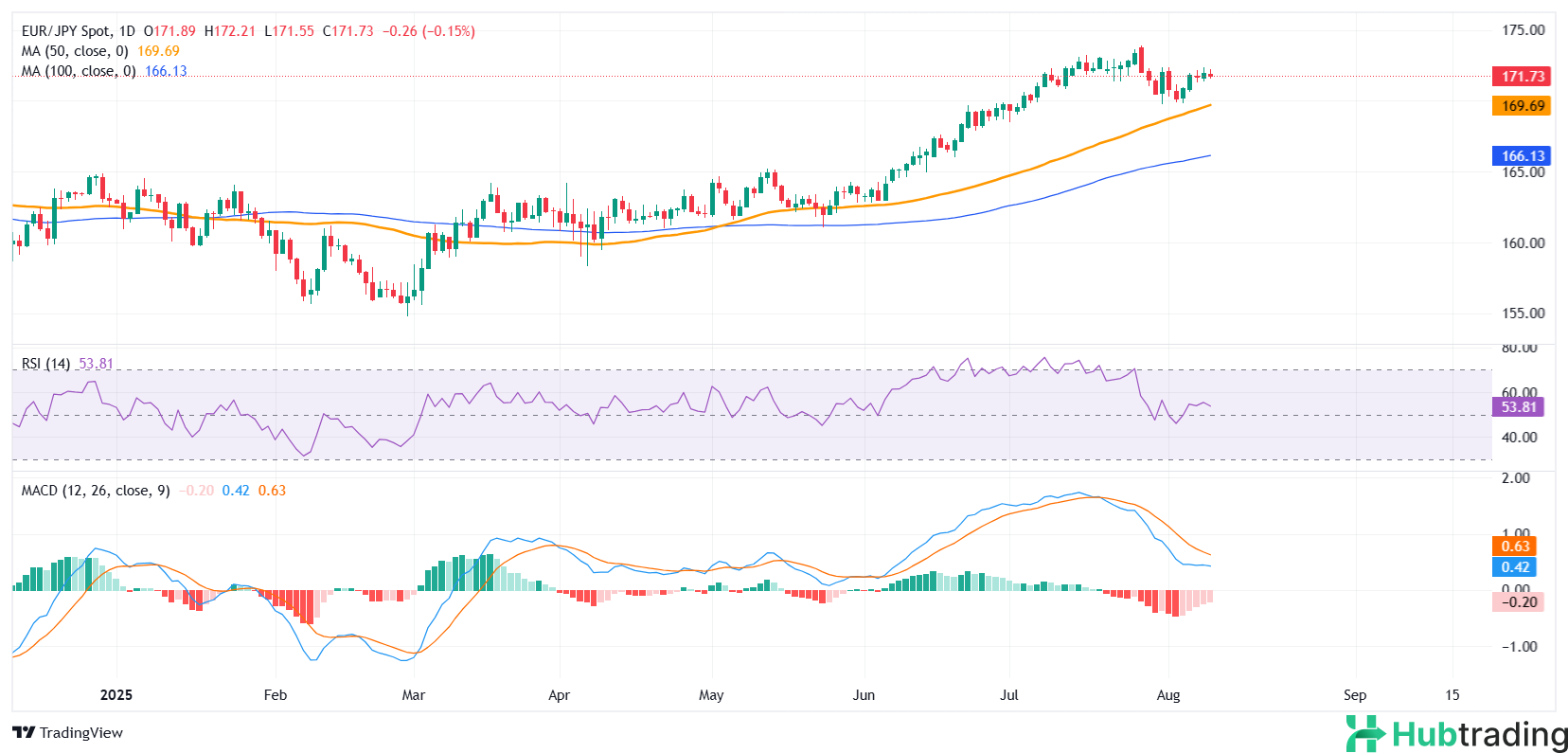-
EUR/JPY holds steady around 172.00 on Monday as market attention turns to the upcoming Trump–Putin summit on Ukraine, scheduled for August 15 in Alaska.
-
Investors await key GDP releases from the Eurozone and Japan on Thursday for potential guidance on the pair’s next move.
-
Technically, EUR/JPY stays above the 50-day SMA at 169.70, with immediate support seen at 171.37; a sustained drop below this level may expose the 167.50 zone.
The EUR/JPY pair trades steadily around 171.75 on Monday, as investors adopt a cautious stance amid heightened geopolitical focus. Market sentiment is being shaped by the announcement from U.S. President Donald Trump, who confirmed a meeting with Russian President Vladimir Putin in Alaska on August 15 to discuss a potential resolution to the conflict in Ukraine. This development may influence global risk appetite and currency flows in the coming sessions.
Despite losing some upward traction after a strong two-month rally, the EUR/JPY pair remains within a bullish trend, supported by the diverging monetary policy outlooks between the European Central Bank (ECB) and the Bank of Japan (BOJ).
The ECB kept interest rates unchanged in July—maintaining the deposit rate at 2.00%, the main refinancing rate at 2.15%, and the marginal lending rate at 2.40%. While this follows a series of eight rate cuts since December 2024, policymakers now appear more cautious, with some signaling that the easing cycle may be nearing an end. Market expectations for additional cuts this year have faded, and institutions like Deutsche Bank are even forecasting a potential rate hike by 2026 if inflation remains on target.
In contrast, the BOJ held its short-term interest rate steady at 0.50% during its July meeting. However, the Summary of Opinions revealed a growing willingness among policymakers to consider another rate hike before the end of the year—provided inflation remains elevated and external risks, such as tariffs, subside. The central bank revised its FY2025 inflation forecast upward to 2.7% from 2.2%, driven by rising food costs and improving domestic sentiment. Still, political uncertainty following the ruling party’s loss of its majority in parliament may hinder timely policy action and complicate the BOJ’s path forward.
Looking ahead, investors are closely watching Thursday’s GDP releases from both the Eurozone and Japan, which could serve as catalysts for the next significant move in EUR/JPY.
Technical Outlook:
EUR/JPY retains a bullish medium-term structure on the daily chart. The pair continues to trade above the 50-day Simple Moving Average (SMA) at 169.70 and the 100-day SMA at 166.13, reinforcing upward momentum.
Immediate support lies at 171.37, which marks Friday’s low. A break below this level would expose the 50-day SMA at 169.70, with further downside potential toward 167.50 if bearish pressure intensifies.On the upside, a clear break above 172.50 could open the path toward the July high of 173.90.
Momentum indicators remain broadly neutral. The Relative Strength Index (RSI) hovers around 54, suggesting consolidation with room for upside extension. Meanwhile, the Moving Average Convergence Divergence (MACD) histogram indicates easing bearish momentum, supporting the case for renewed gains if buying interest strengthens.






